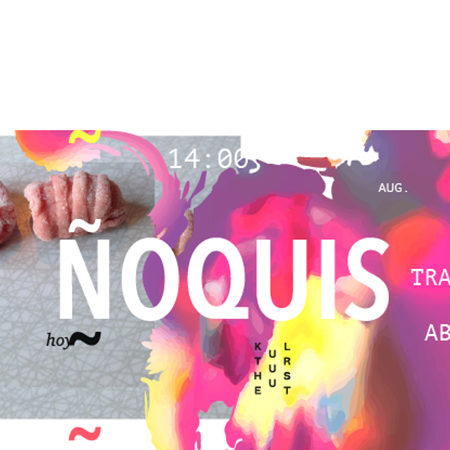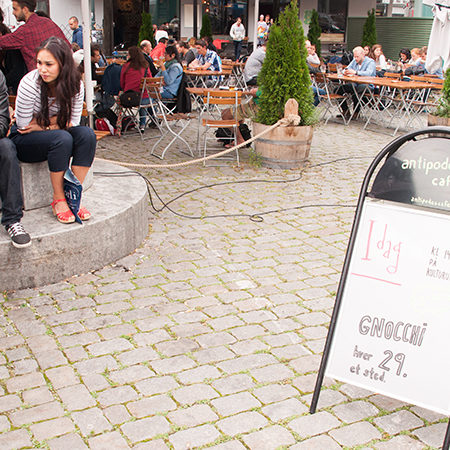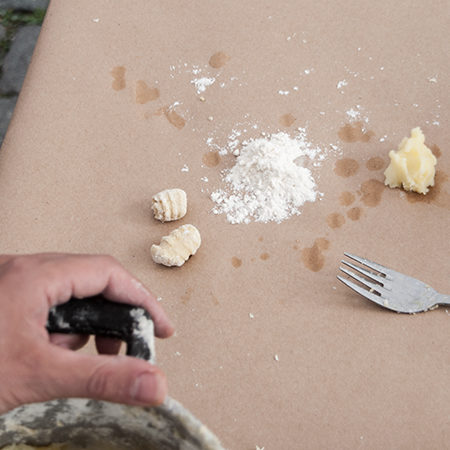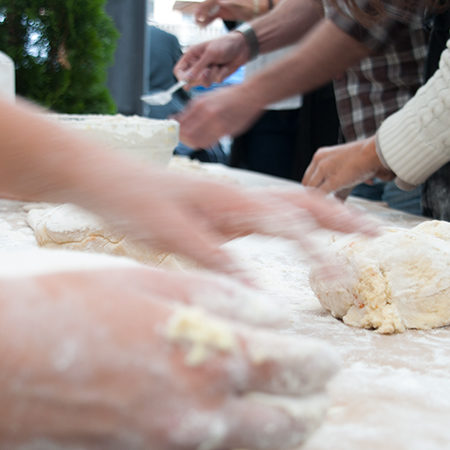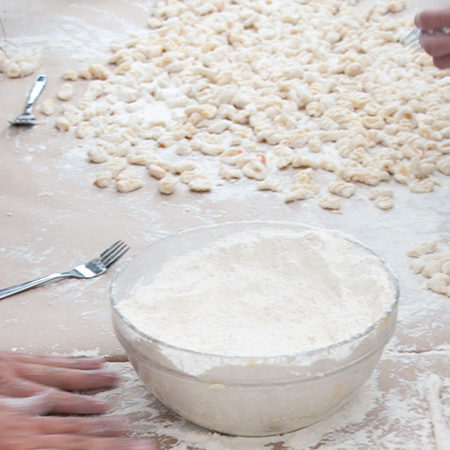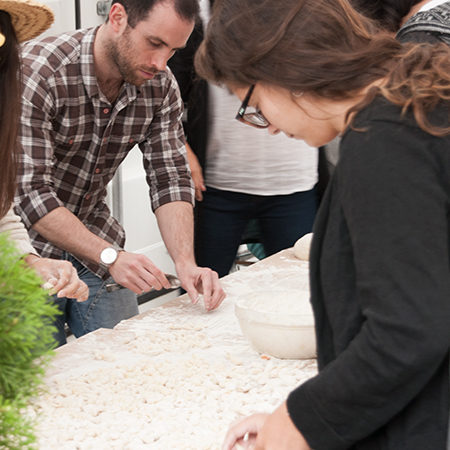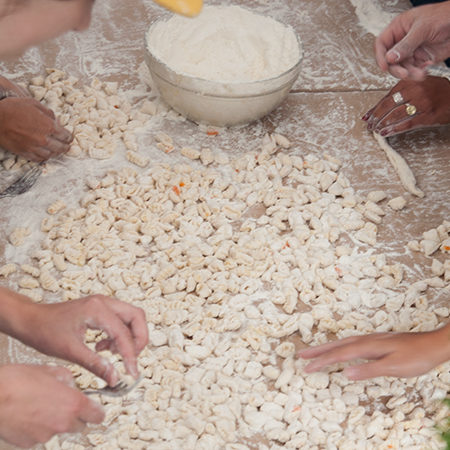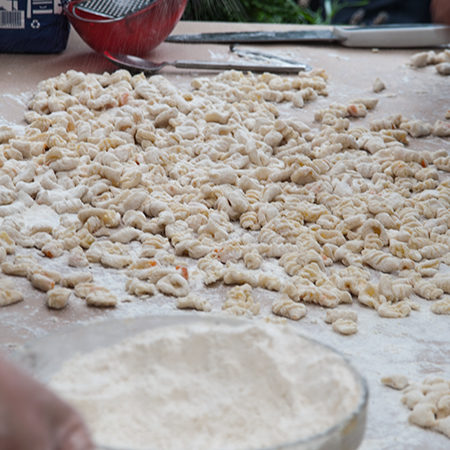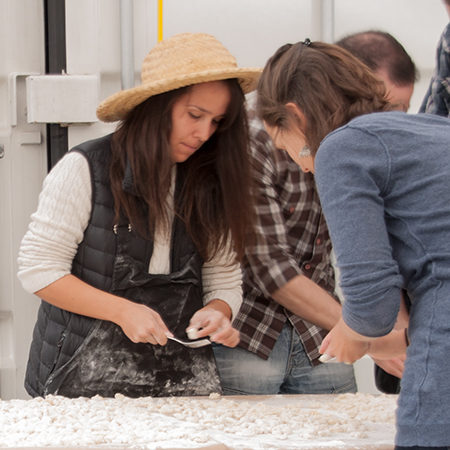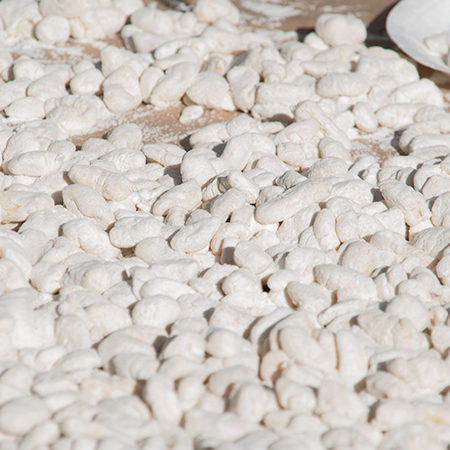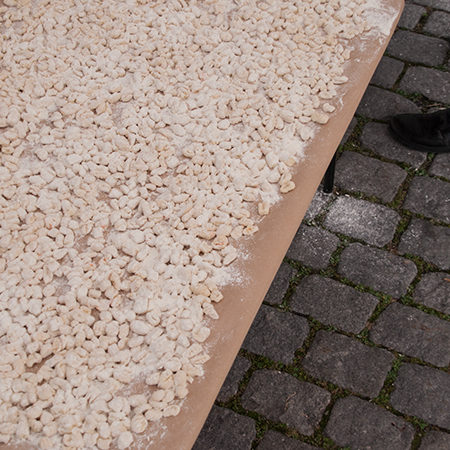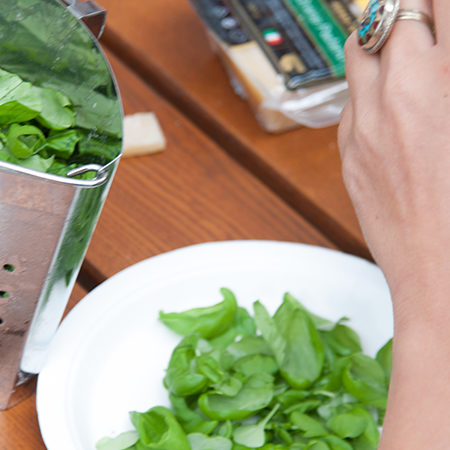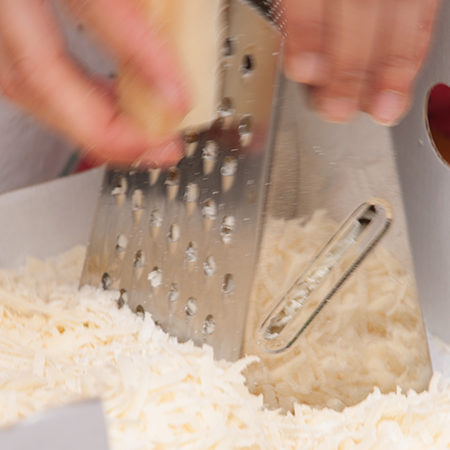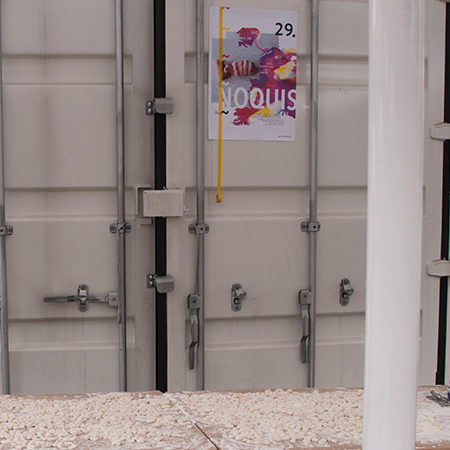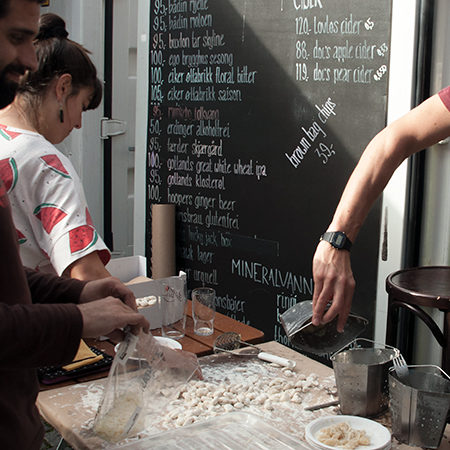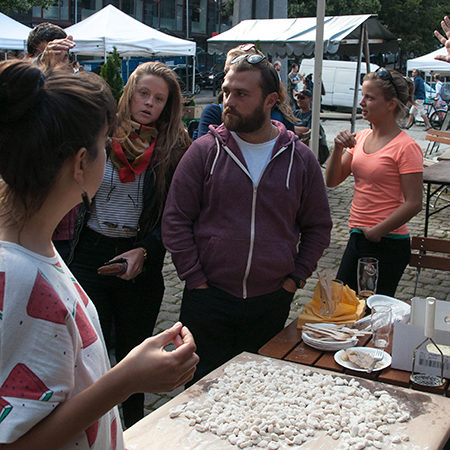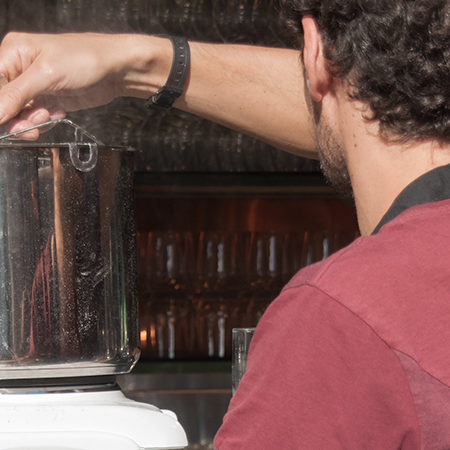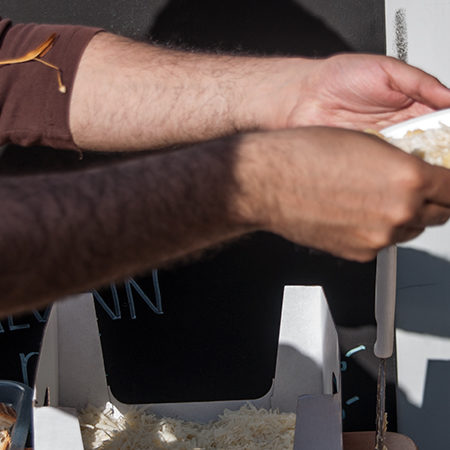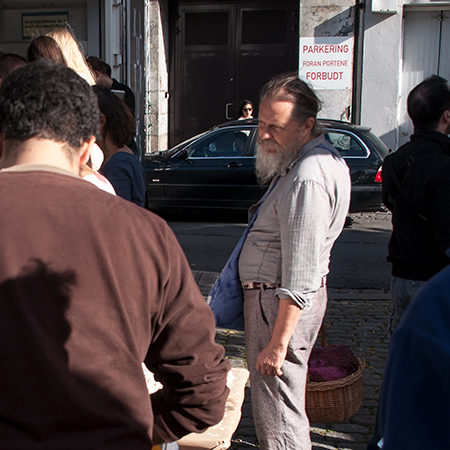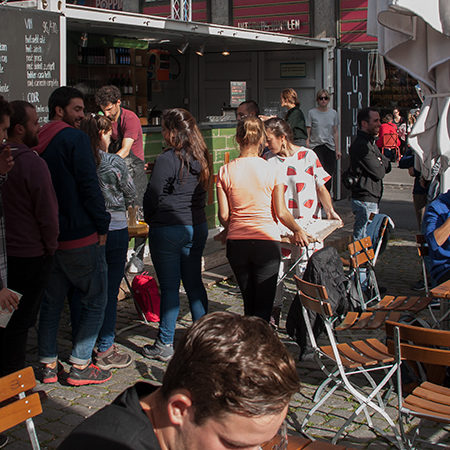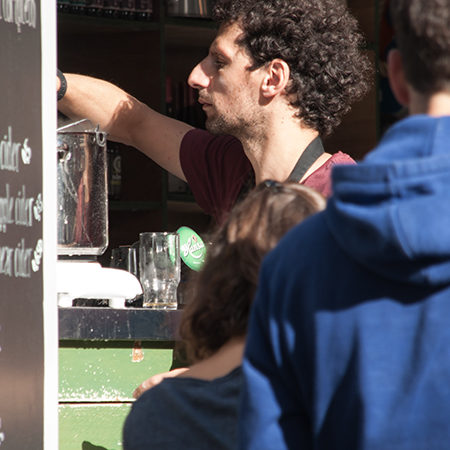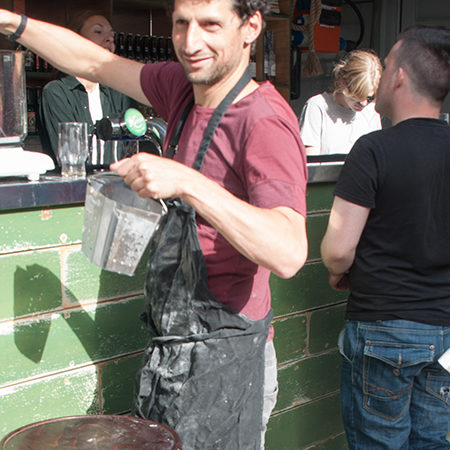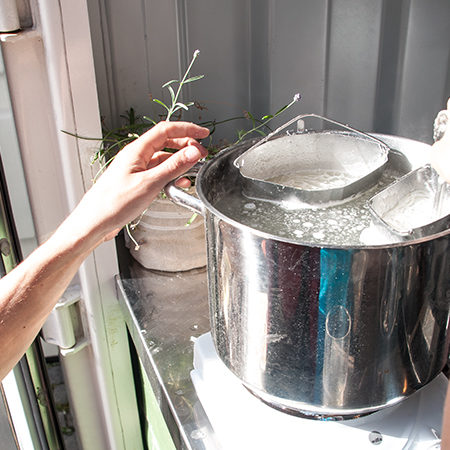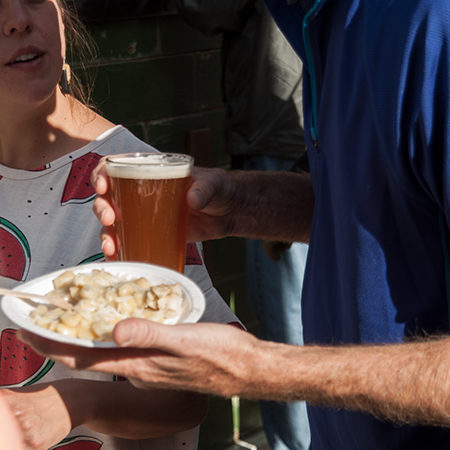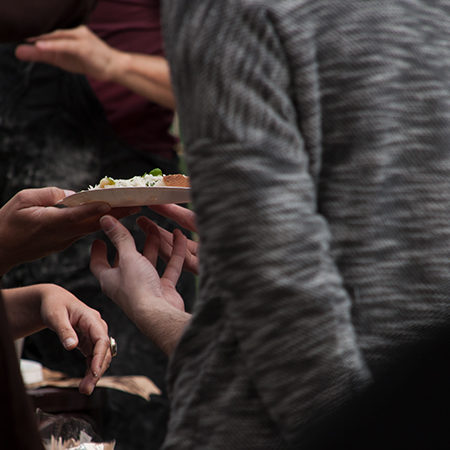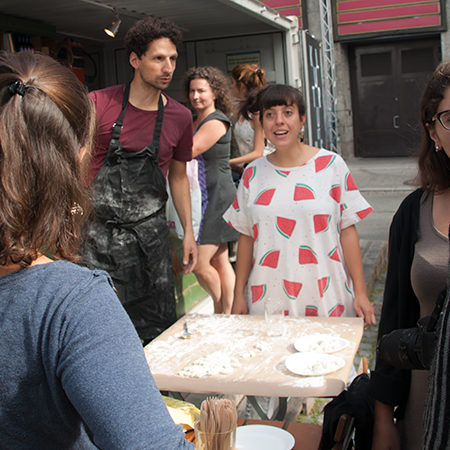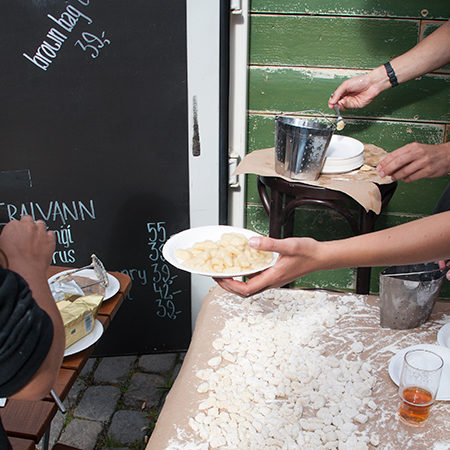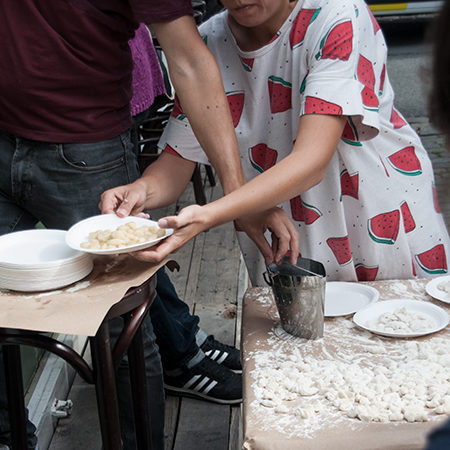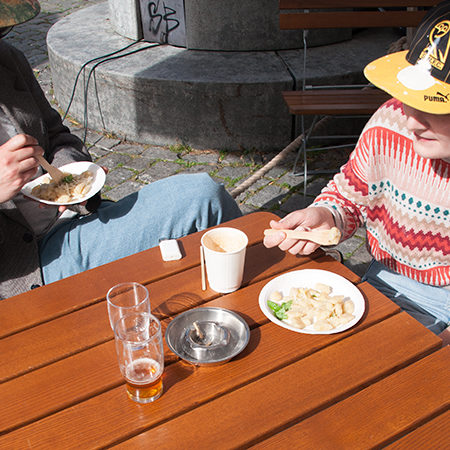Overview
- Kategori Situasjoner / Urban intervensjon / HOY ÑOQUIS
- Location / Region Norge/ Oslo
- Dato 2015.08.28
Description
Aktiviteten ble utviklet i rammen av studiereisen «Grupo de Viaje,» der studenter fra Fakultet for Arkitektur i Uruguay reiser rundt i verden og besøker mange byer og arkitektoniske mesterverk, samtidig som de deltar i forhåndsavtalte forelesninger, klasser og verksteder.
Under deres besøk i Oslo ble vi invitert til å holde en forelesning om våre tidligere arbeider og arbeidsmetode for dem. Vi koordinerte med Kulturhuset i Oslo, som vennligst støttet oss ved å åpne stedet tidlig om morgenen for denne aktiviteten. Senere krysset vi gaten og tok med flere bord for å forberede og servere ñoquis gratis til studentene og alle som ønsket å bli med.
Under forelesningen skrellet studentene potetene, noen av dem kom fra den urbane gården Losæter, som ligger i Bjørvika, Oslo.
La oss snakke om tradisjoner!
TAKK
Kulturhuset i Oslo
Losæter
Grupo de Viaje 2015, FADU (UY)
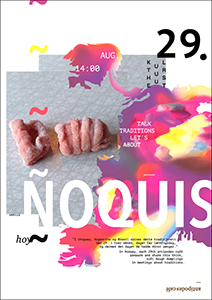
In Uruguay and Argentina, there is a tradition of eating handmade gnocchi the 29th of each month, both in houses and in restaurants. In these last ones, as well as in pasta stores, those days they usually put a sign in the street with the text "HOY ÑOQUIS" (Eng. Today: gnocchi).
Also as part of the tradition, in some places they put a coin (or even notes) under the dish, wishing for money.
This story -that has many versions as all good ones- perhaps should be started highlighting the travel of potatoes from South America to the rest of the world, starting with Europe after their invasion. Later on, poor farmers of northern Italy discovered that they can replace expensive wheat to create a new kind of pasta based on cheap and accessible potatoes, basically dumplings, called gnocchi (Eng. buns/lumps/little balls). This tuber crops has a strong relation with economical vicissitudes, saving from starving diverse populations around the world. Nordic countries knows quite well potatoes for that reason.
In late XIX and beginning of XX centuries, both Argentina and Uruguay where under exponential growth in all senses. But in these times, Europeans weren't in best situation, and particularly Italians flew in millions to those places escaping from economical crisis and wars. Those nations where young and defining their identity on daily basis, and this massive immigration radically affected that construction "through a policy of very strong cultural syncretism." In fact, "there are many Italian traditions that Argentinians [and Uruguayans] keep which are almost not existent in Italy." * One of them is to eat gnocchi on the 29th of each month. A simple dish for wishing for prosperity.
Felipe, born in Uruguay has in his family tree those Italians roots that allowed him to have Italian nationality. And thanks for those papers, he could move to Nordic countries without too many complications as if he arrived just as the South American he is.
Since he moved to Norway, impressed by
- the short time that the old Kingdom behaves as a totally independent nation;
- its quite recent and extreme economical richness (with its abundance);
- history of extreme poverty -not so far in time– still present in many gestures of raw simplicity and austerity;
- the potato is easily cultivated in Norwegian climate and soil;
- role of potatoes in history, saving population in hard times such as during Napoleonic wars or WWII, both in dishes and in glasses;
- the current displacement of potatoes towards modern imports such as rice, pasta and noodles;
- the strong policy against immigration;
- the apathy towards the foreign and the unknown, certified by the law of Jante from 1933;
- the commercial new traditions, such as eating taco on Friday nights or reading crime novels on April.
Felipe started cooking gnocchi sporadically the 29th -and last years on each one- in gathering with the aim of talking about traditions. Who makes them? why? and so on…
Venues and amount of visitors are different from meeting to meeting, but gnocchi are always served gratuitously. During 2016 "HOY ÑOQUIS" gatherings were supported by Oslo Kommune, Bydel Gamle Oslo. (Frivillighetsmidler 2016)

